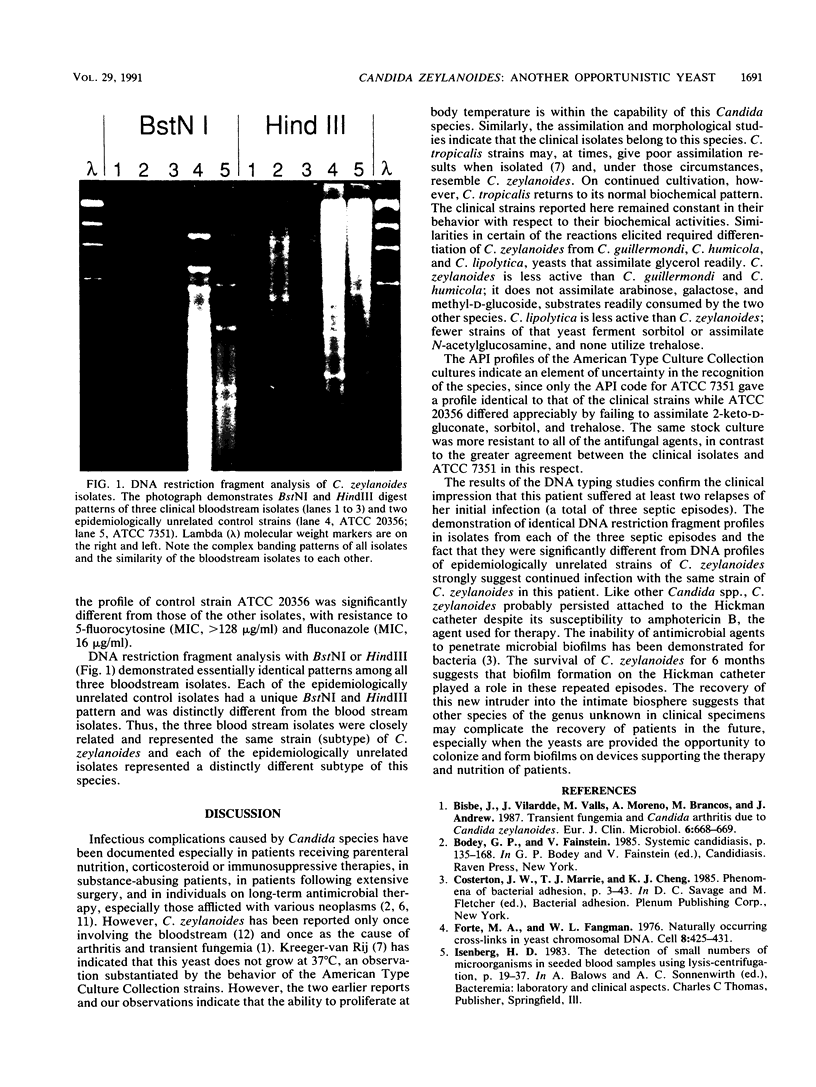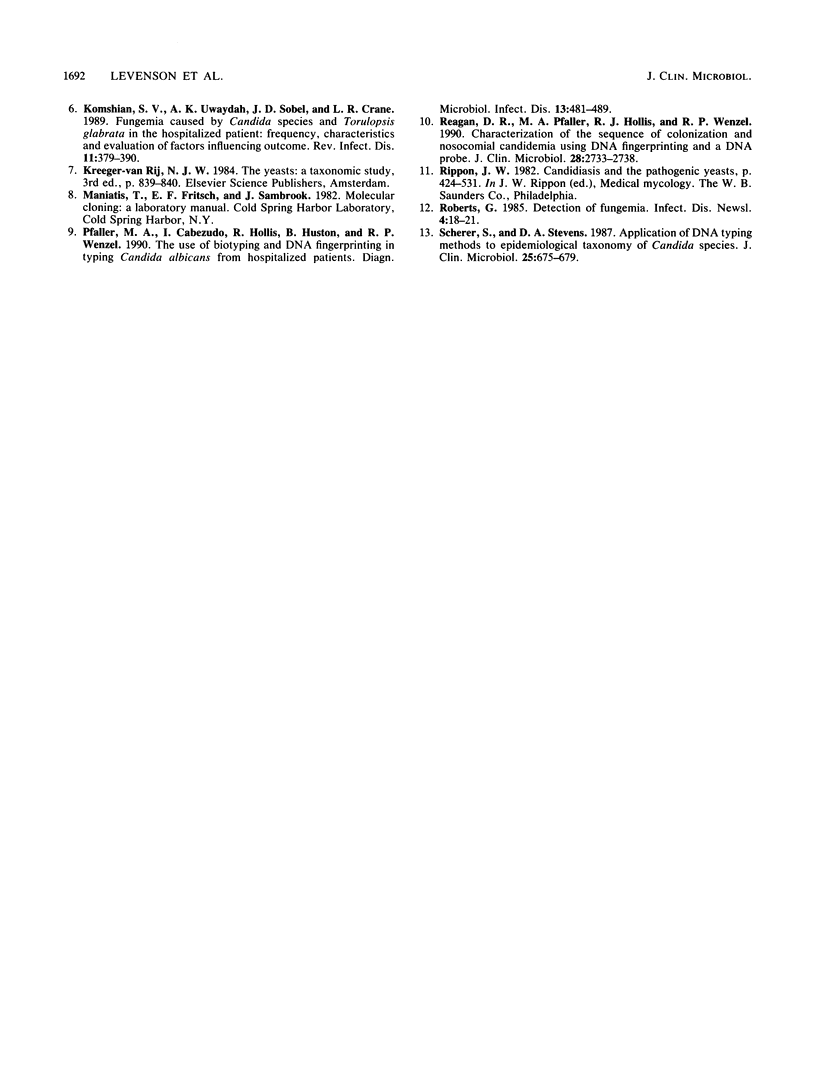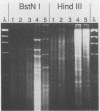Abstract
A patient with a long history of scleroderma and gastrointestinal malabsorption requiring total parenteral nutrition was admitted with Candida zeylanoides fungemia. The yeast responded to therapy, but on two subsequent admissions for episodes of fever the blood cultures yielded the same yeast. The identity of the Candida species was established biochemically by both the API (Analytab) and Vitek system approaches. C. zeylanoides ATCC 20356 and ATCC 7351 served as controls for these analyses and for antifungal susceptibility studies and restriction endonuclease analyses of chromosomal DNA. These investigations indicated that representative isolates of the yeasts from the three episodes were identical and differed in several respects from the ATCC strains, which did not share many of the characteristics bands with the DNA restriction fragment analysis. C. zeylanoides variants capable of tolerating 35 degrees C can complicate the recovery of patients, especially individuals compromised by their underlying disease.
Full text
PDF



Images in this article
Selected References
These references are in PubMed. This may not be the complete list of references from this article.
- Bisbe J., Vilardell J., Valls M., Moreno A., Brancos M., Andreu J. Transient fungemia and Candida arthritis due to Candida zeylanoides. Eur J Clin Microbiol. 1987 Dec;6(6):668–669. doi: 10.1007/BF02013067. [DOI] [PubMed] [Google Scholar]
- Forte M. A., Fangman W. L. Naturally occurring cross-links in yeast chromosomal DNA. Cell. 1976 Jul;8(3):425–431. doi: 10.1016/0092-8674(76)90155-0. [DOI] [PubMed] [Google Scholar]
- Komshian S. V., Uwaydah A. K., Sobel J. D., Crane L. R. Fungemia caused by Candida species and Torulopsis glabrata in the hospitalized patient: frequency, characteristics, and evaluation of factors influencing outcome. Rev Infect Dis. 1989 May-Jun;11(3):379–390. doi: 10.1093/clinids/11.3.379. [DOI] [PubMed] [Google Scholar]
- Pfaller M. A., Cabezudo I., Hollis R., Huston B., Wenzel R. P. The use of biotyping and DNA fingerprinting in typing Candida albicans from hospitalized patients. Diagn Microbiol Infect Dis. 1990 Nov-Dec;13(6):481–489. doi: 10.1016/0732-8893(90)90080-f. [DOI] [PubMed] [Google Scholar]
- Reagan D. R., Pfaller M. A., Hollis R. J., Wenzel R. P. Characterization of the sequence of colonization and nosocomial candidemia using DNA fingerprinting and a DNA probe. J Clin Microbiol. 1990 Dec;28(12):2733–2738. doi: 10.1128/jcm.28.12.2733-2738.1990. [DOI] [PMC free article] [PubMed] [Google Scholar]
- Scherer S., Stevens D. A. Application of DNA typing methods to epidemiology and taxonomy of Candida species. J Clin Microbiol. 1987 Apr;25(4):675–679. doi: 10.1128/jcm.25.4.675-679.1987. [DOI] [PMC free article] [PubMed] [Google Scholar]



